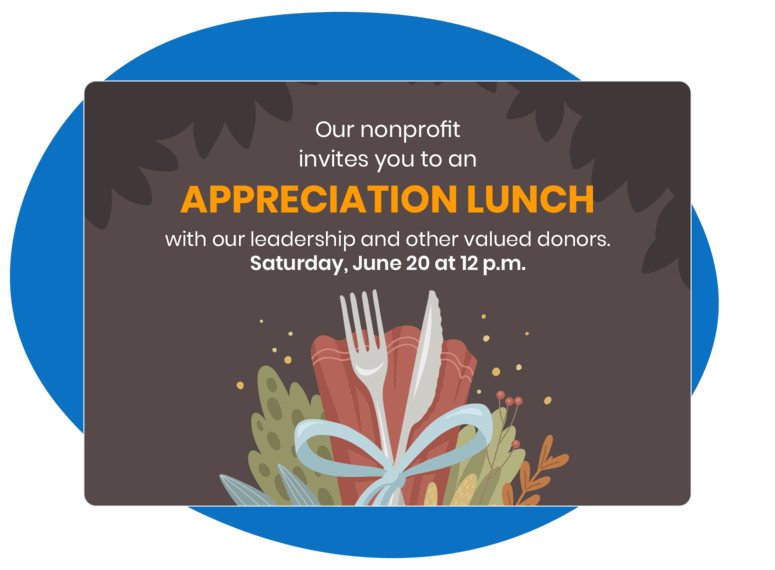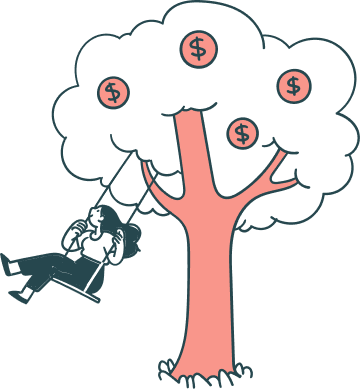Imagine cultivating a community of passionate supporters who are deeply invested in your cause, not just with their wallets, but with their hearts and minds. While traditional fundraising is crucial, the real magic happens when you inspire commitment and passion within donors.
Whether you’re just starting a nonprofit or aspiring to grow, community building is the key to transforming one-off donations into a continuous flow of support and loyalty.
To encourage continual support, we’ll explore how to choose compelling marketing ideas aimed at attracting and retaining donors by sparking their enthusiasm and dedication to your cause. This way, your nonprofit can foster a community that will stand by your side and drive your mission forward with unwavering passion.
Why does donor engagement matter?
Donors are the foundation of your nonprofit. Ensuring they feel engaged and valued is crucial for building a sustainable, thriving community that will do anything to help you succeed. Here are some key reasons why donor engagement is crucial beyond securing financial support:
- Enhanced trust: By keeping donors informed and involved in your nonprofit’s activities and successes, you’ll build credibility. Transparency about how donations are used and the impact they create reassures current donors that their contributions are making a difference and potential donors that you’re a trustworthy steward of donations.
- Volunteer, advocate, and event attendee recruitment: Engaged donors are more likely to show support outside of regular donations by volunteering, spreading awareness, and attending events.
- Crisis support: During challenging times like economic downturns, engaged donors are more likely to provide additional support. Their ongoing commitment can be a critical lifeline.
- Cost-efficiency: You likely invest a lot of resources and time into marketing your mission and inspiring prospects to donate. It’s less costly to convince a past donor to give again, especially when you know their giving motivations, communication preferences, and past giving amounts.
- Word-of-mouth marketing: When you value your donors, the word will get around, and word-of-mouth marketing is one of the most powerful forms of nonprofit communication. Engaged donors can help raise awareness about your cause to attract new supporters.
These are just some of the positive effects of a comprehensive donor engagement strategy. Here’s what it all boils down to: engaging donors is vital for your nonprofit’s growth, sustainability, and ability to achieve its mission. It transforms transactional relationships into meaningful partnerships that last.
Donor Engagement Ideas
Forming a strong community requires planning how you’ll connect with and engage your different audiences. Here are some tried-and-true strategies that allow room for creativity.
Personalize marketing.
By tailoring communications to meet the specific interests and needs of your donors, you can create more meaningful interactions. The foundation of this strategy lies in segmentation, a strategy that ensures you understand who your donors are and what motivates them to give.
This process requires you to take the following steps:
- Ensure your donor profiles are complete. Collect donors’ demographics, donation history, and engagement preferences. If you’re missing any donor information, consider conducting an append. For instance, you can conduct demographic appends to enrich your donor database with data points such as age, gender, income level, and geographic location.
- Identify segmentation criteria. Once your profiles are complete, identify the key characteristics that will form the basis of your segments, such as donation frequency or amount, interests, or engagement levels. This helps in creating meaningful and actionable segments.
- Develop and implement personalized messages. Craft tailored messages for each segment, addressing their specific interests and motivations. For example, new, one-time donors might receive welcome messages with introductory information about your organization, while recurring donors might get detailed updates on ongoing projects, custom fundraising eCards, and invitations to exclusive events.
From here, monitor the results of your segmented communications and adjust strategies as needed based on engagement metrics.
Show impact.
Donors are more likely to feel passionate about causes they believe are making a tangible difference. Demonstrating the impact of their contributions helps build trust, satisfaction, and commitment. Here are a few ways to show impact:
- Storytelling: Share compelling stories of individuals or communities whose lives have been affected by your work. Personal narratives create emotional connections and highlight the human side of your work. Be sure to share these stories across your blog, social media channels, email newsletters, and donation request letters.
- Annual reports: Provide detailed annual reports that highlight achievements, financial health, and future goals. Use visuals and infographics to make the data accessible and engaging.
- Impact statistics: Beyond your annual report, share clear statistics that quantify your nonprofit’s impact across your marketing channels. You might share the number of beneficiaries served, programs implemented, or funds utilized. Depending on the data you want to publicize, your various fundraising tools will automatically gather some of these helpful metrics.
- Volunteer opportunities: Encourage supporters to volunteer to see the impact of their contributions firsthand. For example, invite donors to help build a playground they funded, allowing them to see how their donations create a safe and enjoyable space for children.
By showcasing tangible results, you not only validate the importance of donors’ contributions but also inspire them to stay committed to your cause.
Host events.
Celebrate your donors’ contributions by hosting an appreciation event. These invite-only events provide the chance to thank donors personally, share the successes their support has enabled, and deepen connections to your mission.
Whether it’s a formal gala, an informal luncheon, or a virtual gathering, appreciation events foster a sense of community and reinforce the value of each donor’s involvement. During your event, you can:
- Feature guest speakers, such as beneficiaries or your nonprofit’s executive director.
- Hand out donor gifts, such as branded merchandise or commemorative keepsakes like a limited-edition print related to your mission.
- Host an award ceremony where you recognize outstanding contributions.
eCardWidget’s donor recognition guide suggests sending custom invitations to build excitement for your event. This is a great way to add a personal touch and increase attendance!

Inspire ongoing support with advertising.
Advertising empowers your nonprofit to build and sustain donors’ passion for your cause. By using targeted advertising campaigns, you can attract potential supporters, reinforce connections, and inspire ongoing contributions.
Getting Attention’s nonprofit advertising guide delves into several platforms you can use to drive donor engagement, such as:
- Google Ads: Promote your nonprofit’s mission, educational content, and fundraising campaigns via Google Ads. Target specific keywords related to your cause to attract potential donors who are searching for causes like yours on Google. Best of all, eligible nonprofits can use this platform for free. If approved, your nonprofit can receive up to $10,000 in monthly Google Ad credits to promote your website’s content.
- Social media advertising: Platforms like Facebook, Instagram, and LinkedIn offer robust multimedia advertising options. Create compelling ads that highlight the impact of donations, feature success stories, and invite people to join your cause.
- Video campaigns: Use YouTube and TikTok ads to tell powerful stories of how your nonprofit is making a difference. Engaging videos can convey the emotional impact of your work, inspiring viewers to support your cause.
When designing your ads, focus on promoting valuable content that donors will find useful and informative. For instance, if your nonprofit focuses on environmental conservation, share stories about specific projects and emphasize the impact of donations to captivate donors who are passionate about sustainability. Be sure to adjust each ad to fit the style of the different platforms you’re using, drive users to take a specific action, and direct traffic to your nonprofit’s website.
With targeted ads, you can effectively maintain donors’ passion for your cause, ensuring they stay connected to your nonprofit’s mission.
Final Thoughts
Your donors are the reason you can fulfill your mission. Inspire them to stick around, so you can keep building your community and fueling your work. As you implement new engagement strategies, pay attention to how donors respond. Knowing whether your strategies are making a difference allows you to adjust and make your donors feel like you care about your relationship with them.



